Eagle, Woodchuck, Sun, Migrants - UPDATE April 22, 2020
The eagle has landed. It flew in out of the corner of my eye looking huge and landed by a 20-pound piece of suet 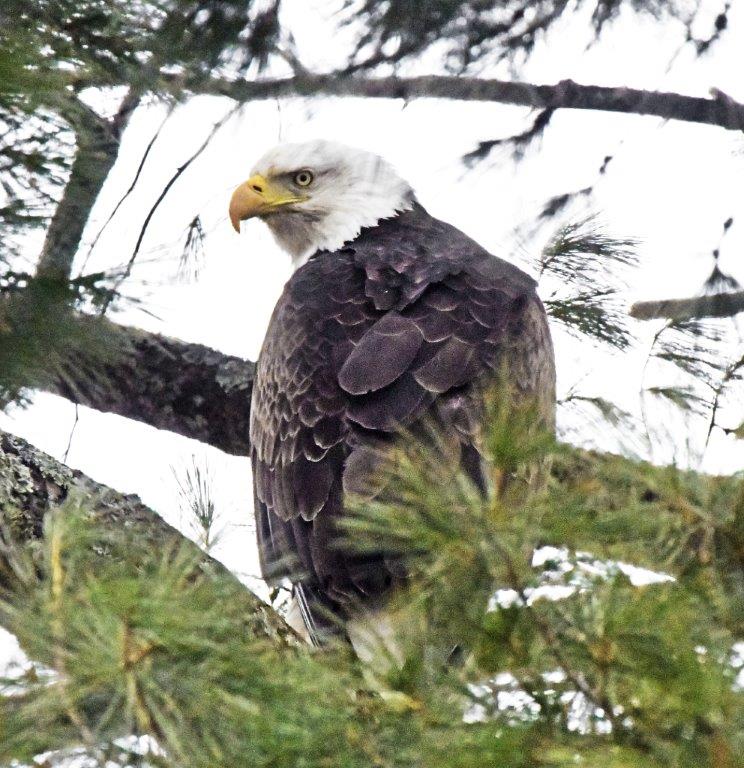 Bald eagleI hoped he couldn’t ignore. He caught me off-guard. I had to reach for my wider lens to get him in the picture. His eagle-eye saw the motion in the window only 10 feet away, and he flew up into a white pine and watched me as I clicked a shot with the long lens. I waited, futilely hoping he couldn’t resist the suet. He flew away.
Bald eagleI hoped he couldn’t ignore. He caught me off-guard. I had to reach for my wider lens to get him in the picture. His eagle-eye saw the motion in the window only 10 feet away, and he flew up into a white pine and watched me as I clicked a shot with the long lens. I waited, futilely hoping he couldn’t resist the suet. He flew away.
The sun the last few days make the common grackles glisten. Beautiful. The subspecies here is the bronzed grackle—named for the color of its back.
American goldfinches here are beginning to look a lot like summer. This one has nearly a black crown with a few tiny brown winter feathers clinging on, and has a nearly yellow body with a couple patches of brown yet on the back.
An eastern chipmunk has emerged and gotten busy in the last couple days filling its cheeks with sunflower hearts and making the pile shrink faster than the squirrels or birds do.
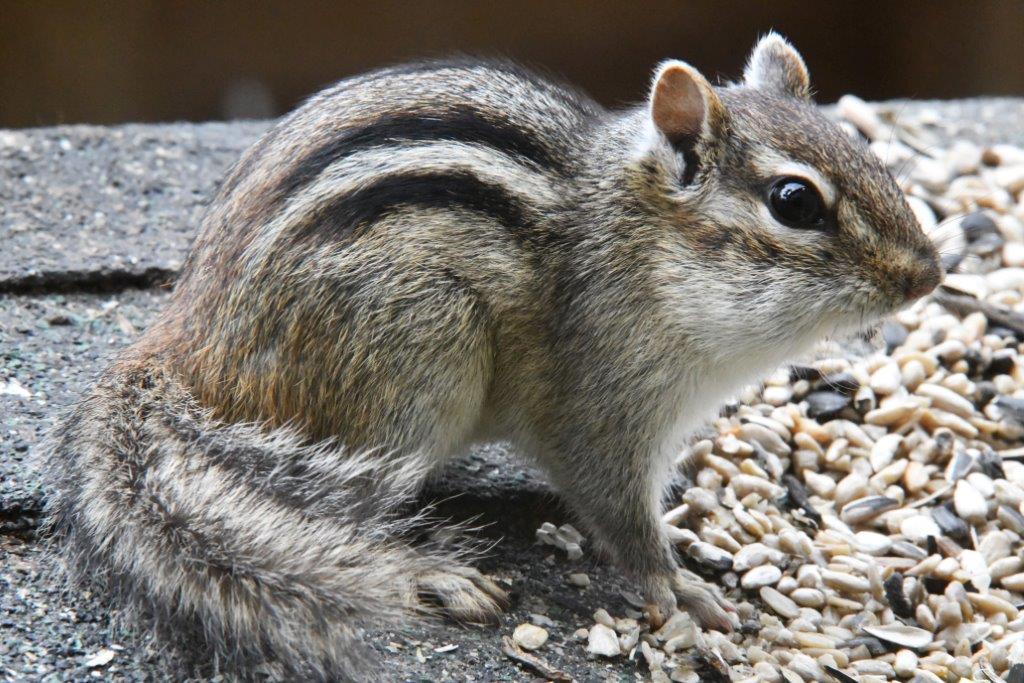 Eastern chipmunk Eastern chipmunk |
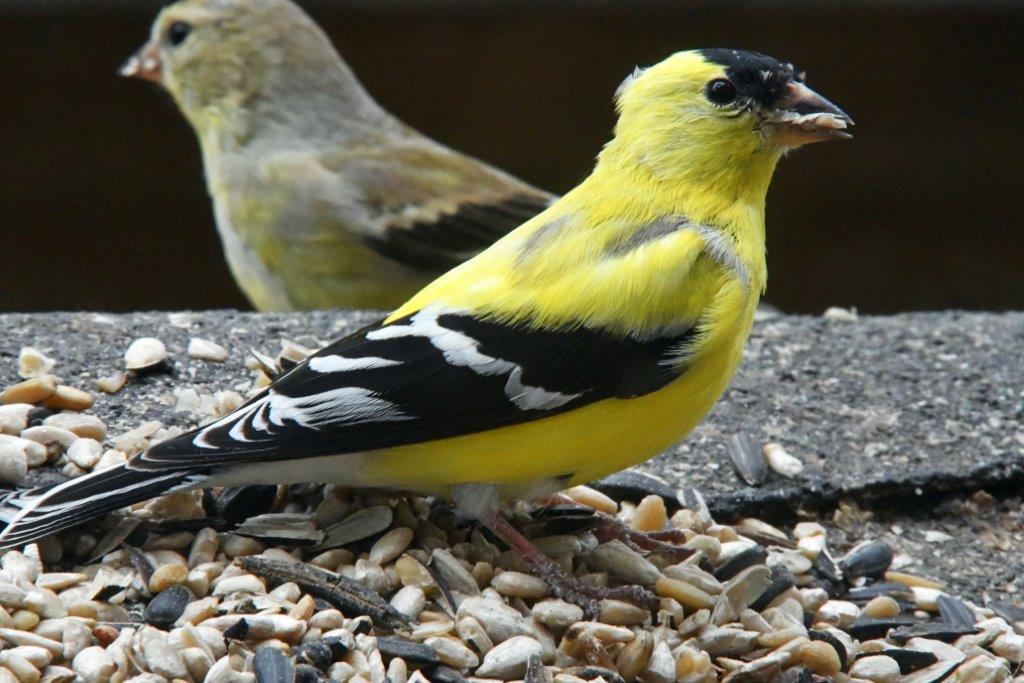 Goldfinches Goldfinches |
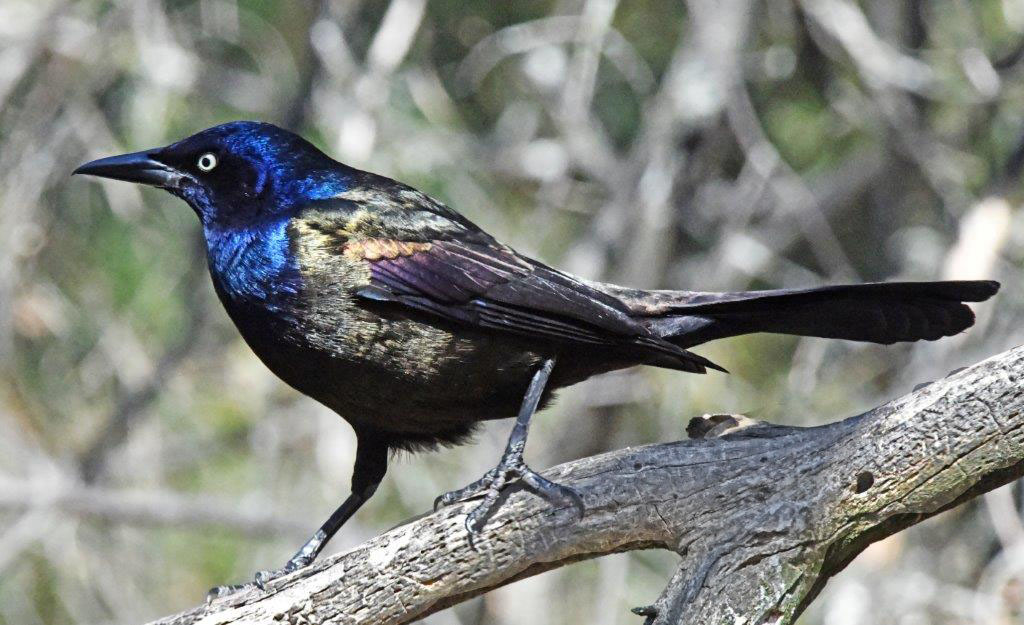 Grackle Grackle |
The new male woodchuck might have eaten his last piece of broccoli for awhile. When he was done, he disappeared running up the driveway in the same manner he arrived here on the 18th. He was the calmest, most trusting one of them all, and he’s hardly here. We’ll see if he appears again. All the while he was here, I didn’t see the young woodchuck and wonder if he found this place too busy with 3 adults to contend with and left.
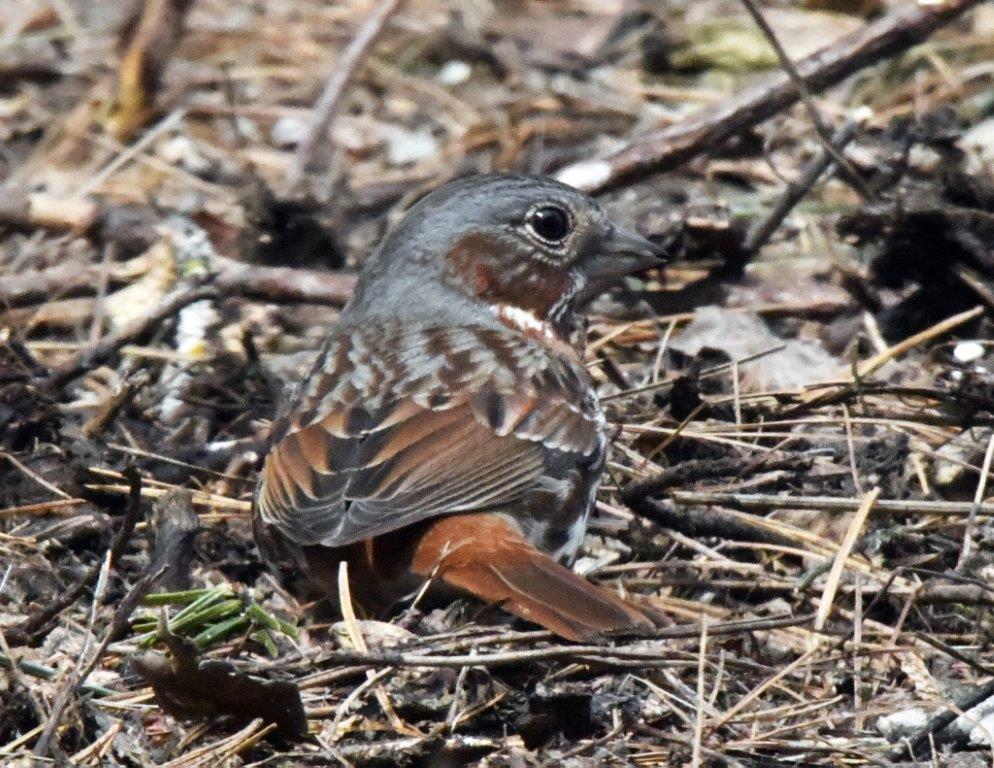 Fox sparrow still Fox sparrow still |
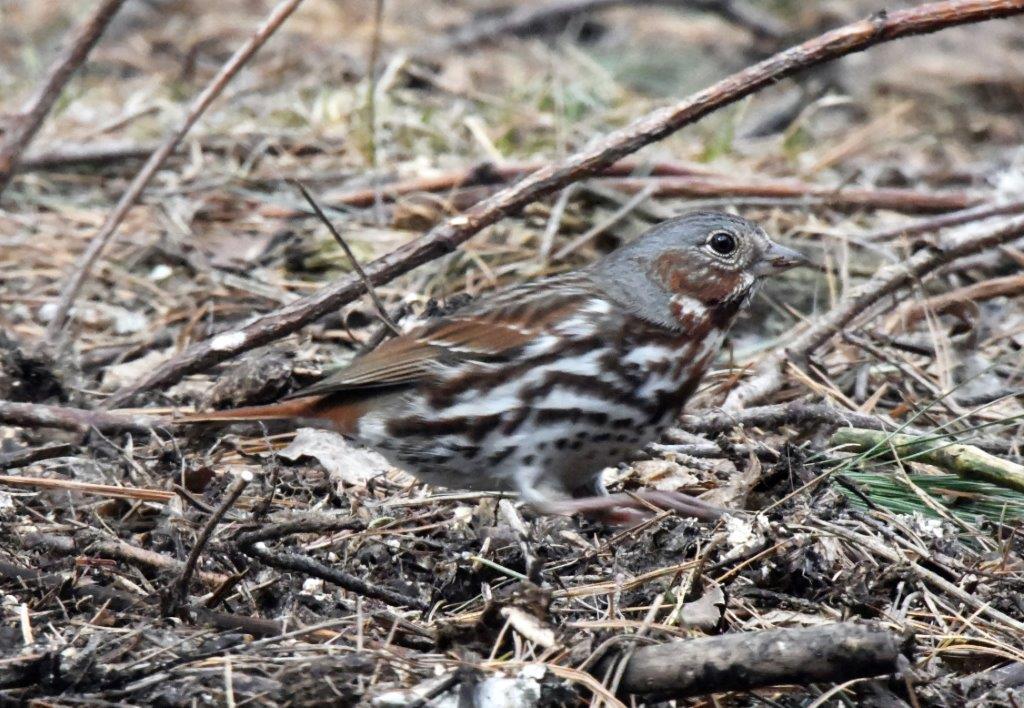 Fox sparrow kicking Fox sparrow kicking |
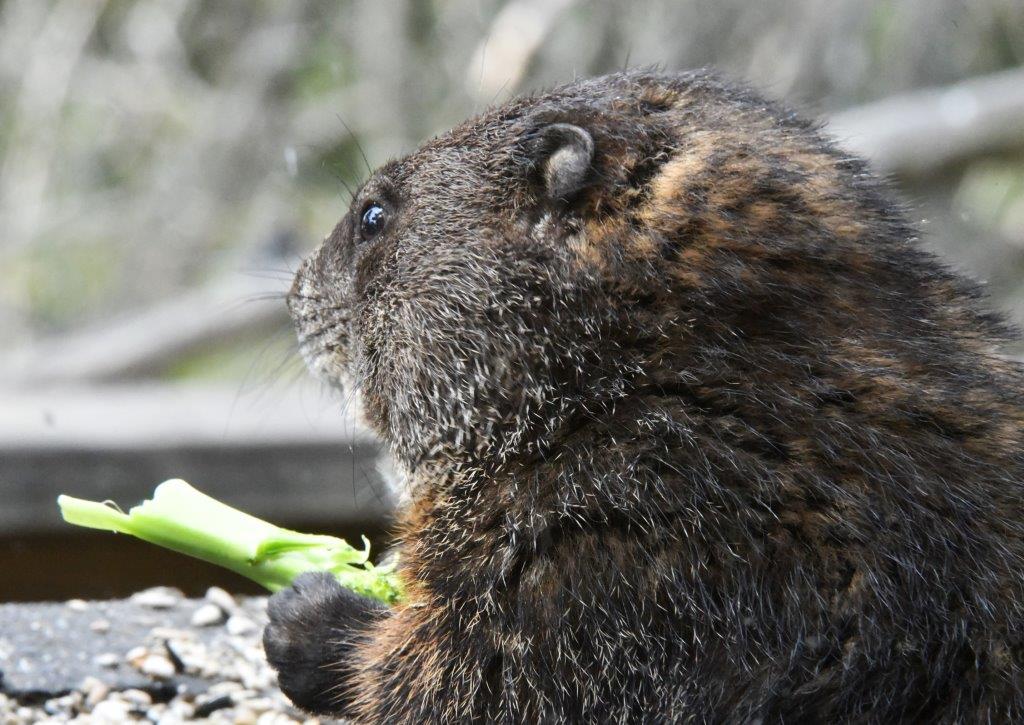 Woodchuck new male Woodchuck new male |
Fox sparrows are coming through. They blend in well with the forest floor when they are sitting quietly, but most of the time they are a blur of motion, hopping and sweeping their feet and legs back raking away ground litter to get down to bare soil. Trying to snap a picture, I saw that even when their whole body is a blur, their head is still as if that ability is an adaption to their busy way of life to let them spot movement that might be danger. From here, they will travel another 300 miles north to the southern edge of their breeding range and not be seen in this area until September.
It’s only in the mid 30’s F, but warmth and big change are on the way. Hoping to make Ted happy with visitors soon.
Thank you for all you do.
Lynn Rogers, Biologist, Wildlife Research Institute and North American Bear Center